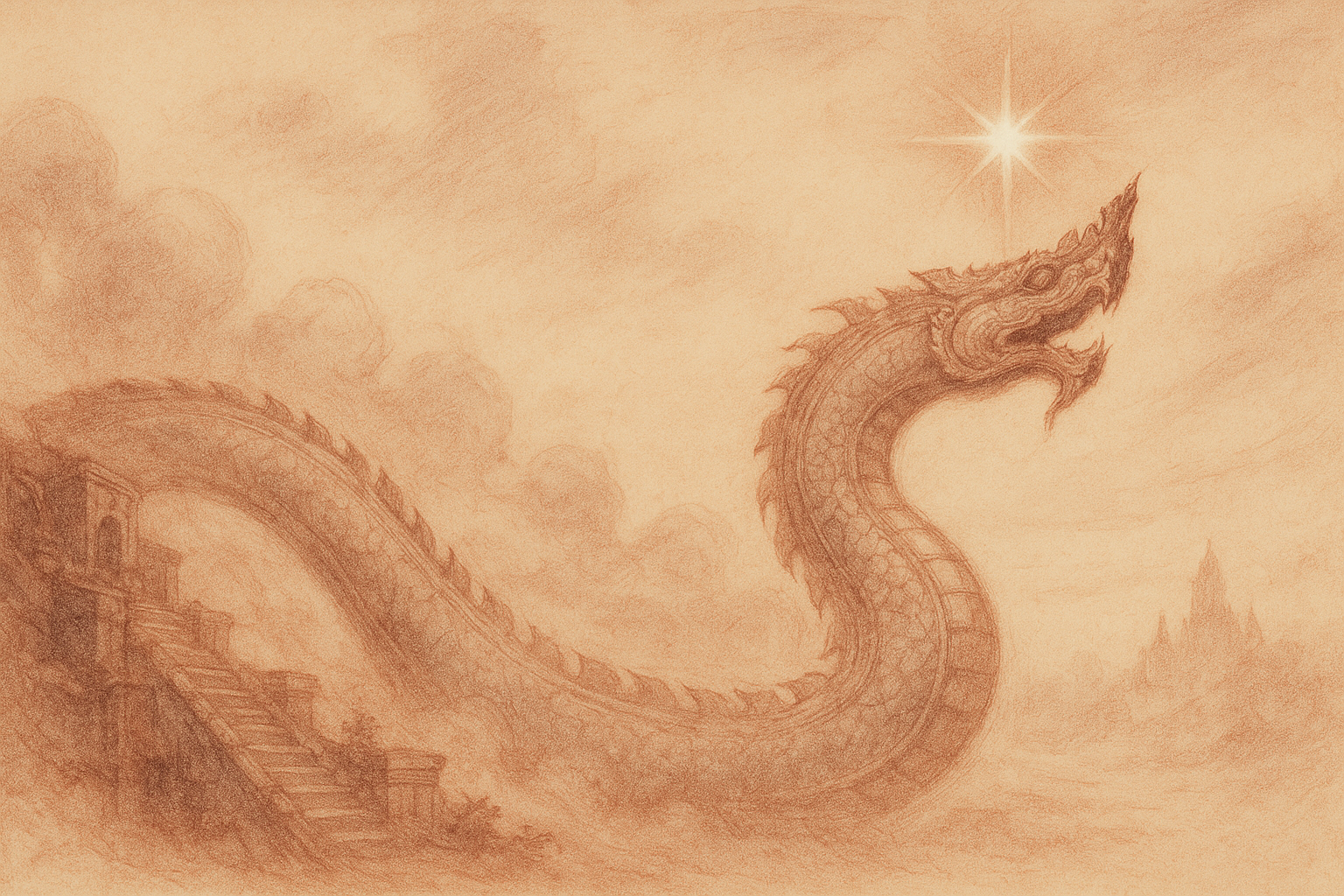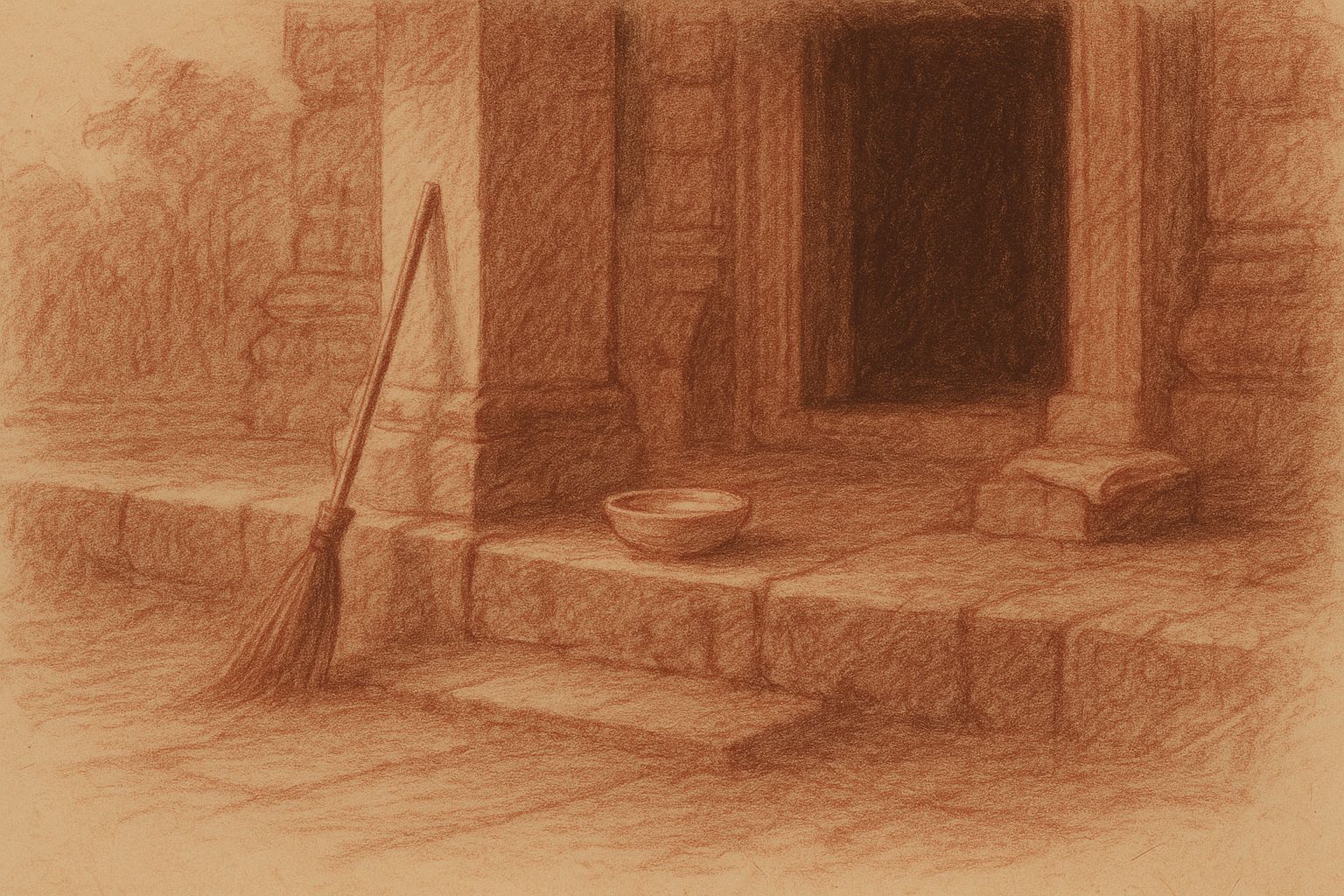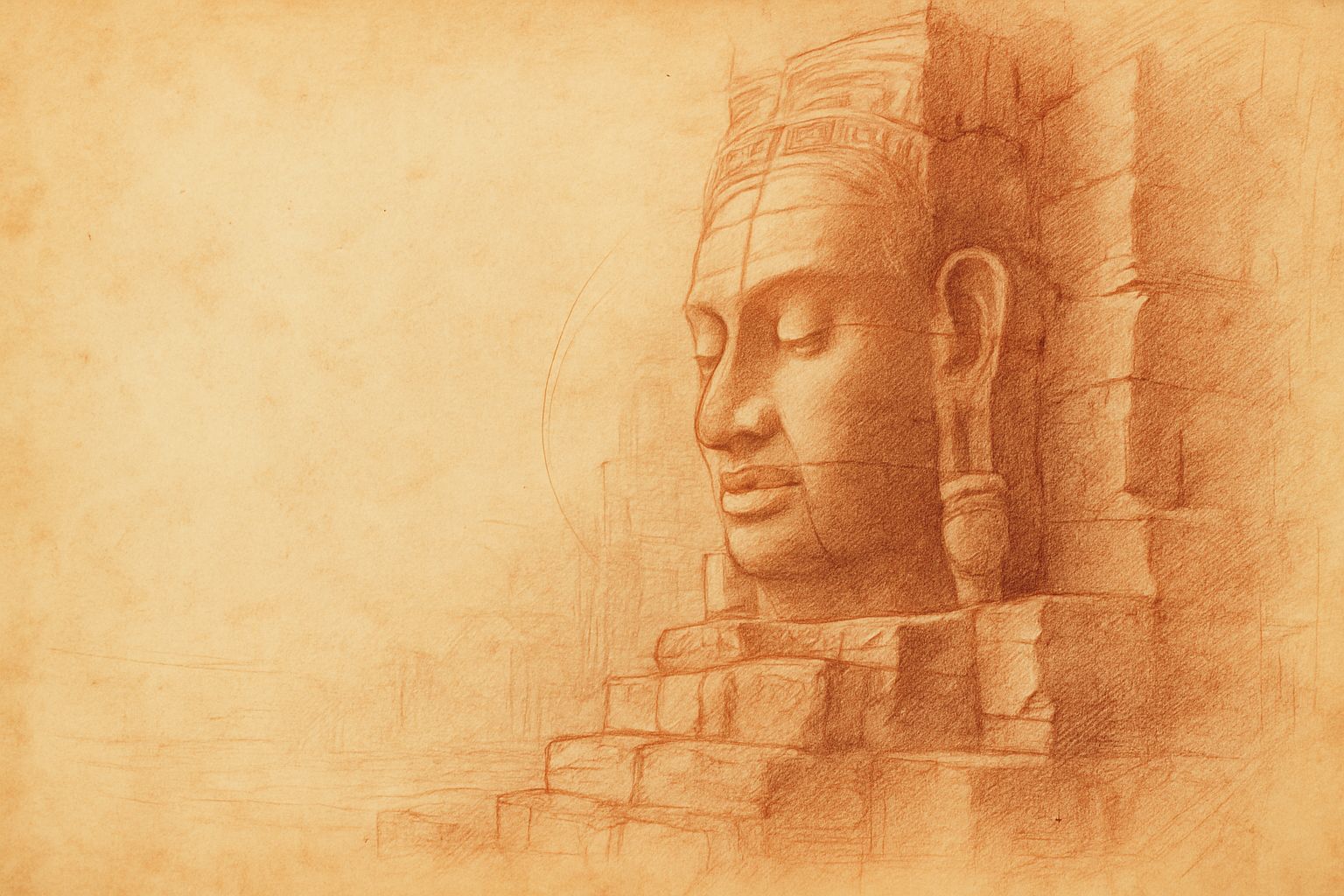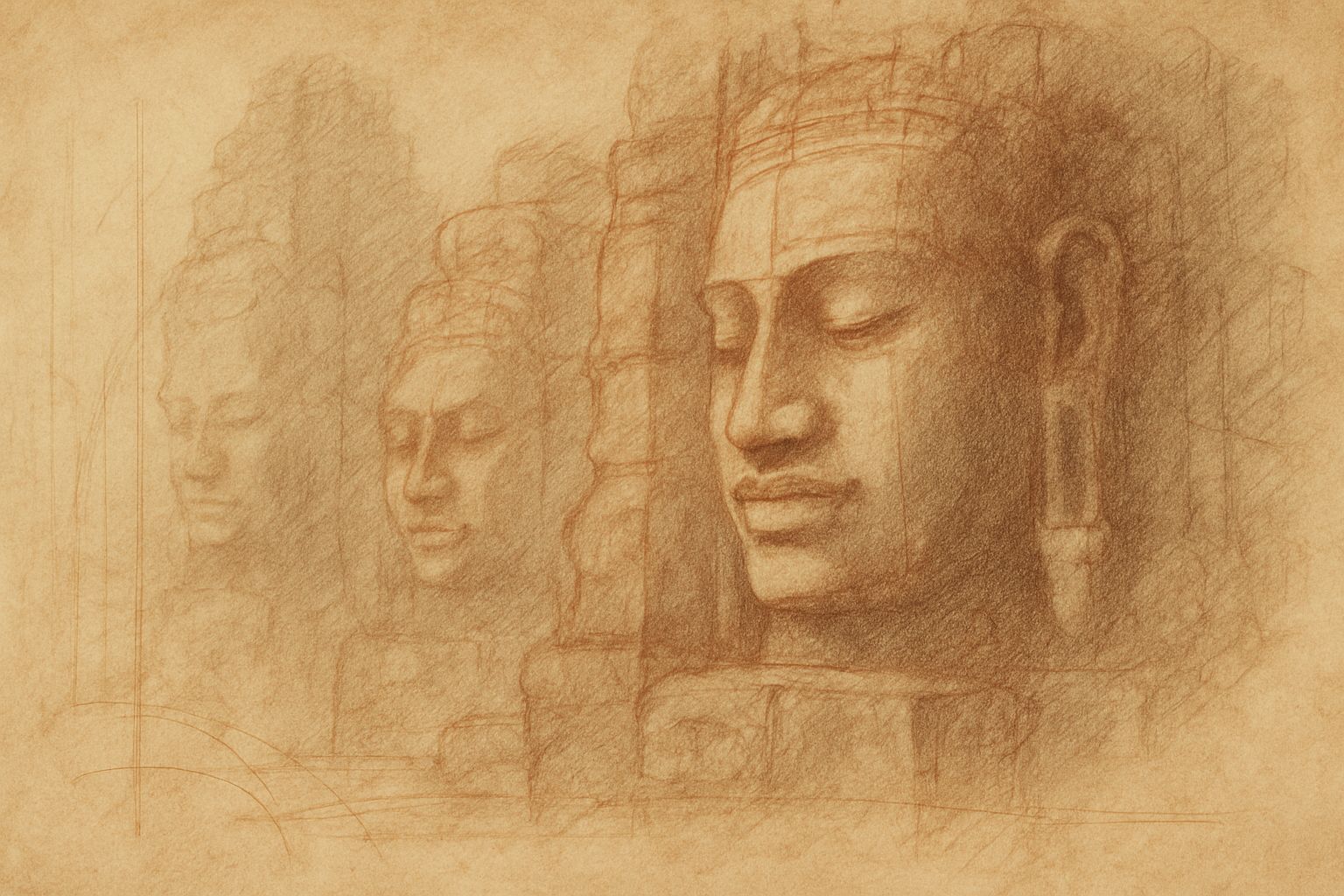Complimentary worldwide shipping on orders over $400 · No import tariffs for most countries
Complimentary worldwide shipping on orders over $400 · No import tariffs for most countries

A Bridge Between Realms: On Imagining Khmer Myths
Author’s Introduction to The Serpent and the Star
The stories in this series are not scholarly translations, nor strict retellings of preserved Khmer folktales. They are something quieter. They are offerings.
Some rise closely from ancient soil—from tales once whispered in temple courtyards, woven into court dances, or carved along sandstone walls. Others are newly imagined, drawn from the deep wells of mythic feeling that still linger in Angkor’s shadows. But all are shaped in the spirit of Khmer cosmology, sacred symbolism, and the unseen world that flickers just beyond the veil.
Each story has been written with poetic care and reverent joy—not to replace the old, but to walk beside it. Like incense beside stone, or mist upon still water. They are voices that echo—not always exactly, but faithfully—what the naga, the apsara, and the temple may remember.
The first story—The Serpent and the Star—is not part of any recorded Khmer legend. And yet, when I walk beneath the towers of Angkor Wat, or stand by a lotus pond beneath moonlight, I feel its truth everywhere. A naga rising in silence. A celestial being drawn to earth. A temple shaped from longing.
These tales are meant to enchant and to invite—to stir memory in those who have visited these sacred places, and wonder in those who have not. They are bridges between realms, written for spiritually attuned adults and the children who read beside them.
With devotion and joy,
Lucas Varro
Angkor, Cambodia
Also in Library

Those Who Keep the Way Open — On the Quiet Guardians of Angkor’s Thresholds
3 min read
Quiet gestures shape the way into Angkor — a swept stone, a refilled bowl, a hand steadying a guardian lion. This essay reflects on the unseen custodians whose daily care keeps the thresholds open, revealing how sacredness endures not through stone alone, but through those who tend its meaning.

Multiplicity and Mercy — The Face Towers of Jayavarman VII
5 min read
A new vision of kingship rises at the Bayon: serene faces turned to every horizon, shaping a world where authority is expressed as care. Moving through the terraces, one enters a field of steady, compassionate presence — a landscape where stone, light, and time teach through quiet attention.

Stone That Dreams
4 min read
Bayon wakes like a mind emerging from shadow. Its many faces shift with light and breath, teaching that perception—and the self—is never singular. In walking this forest of towers, the pilgrim discovers a quiet multiplicity within, held together by a calm that feels both ancient and newly understood.
Join My Studio Journal
Receive occasional letters from my studio in Siem Reap—offering a glimpse into my creative process, early access to new fine art prints, field notes from the temples of Angkor, exhibition announcements, and reflections on beauty, impermanence, and the spirit of place.
No noise. No clutter. Just quiet inspiration, delivered gently.
Subscribe and stay connected to the unfolding story.

Join My Studio Journal
Receive occasional letters from my studio in Siem Reap—offering a glimpse into my creative process, early access to new fine art prints, field notes from the temples of Angkor, exhibition announcements, and reflections on beauty, impermanence, and the spirit of place.
No noise. No clutter. Just quiet inspiration, delivered gently.
Subscribe and stay connected to the unfolding story.
